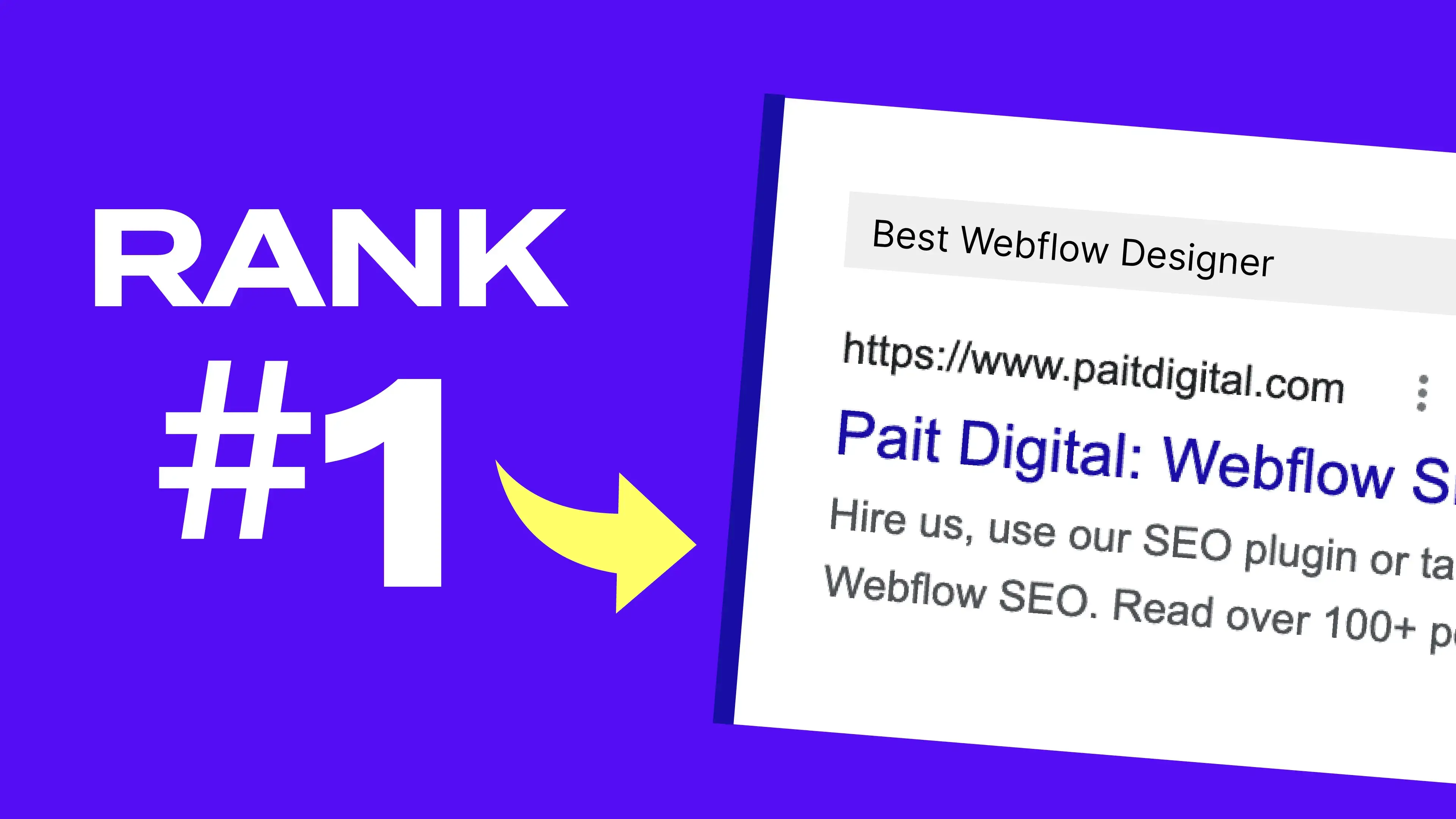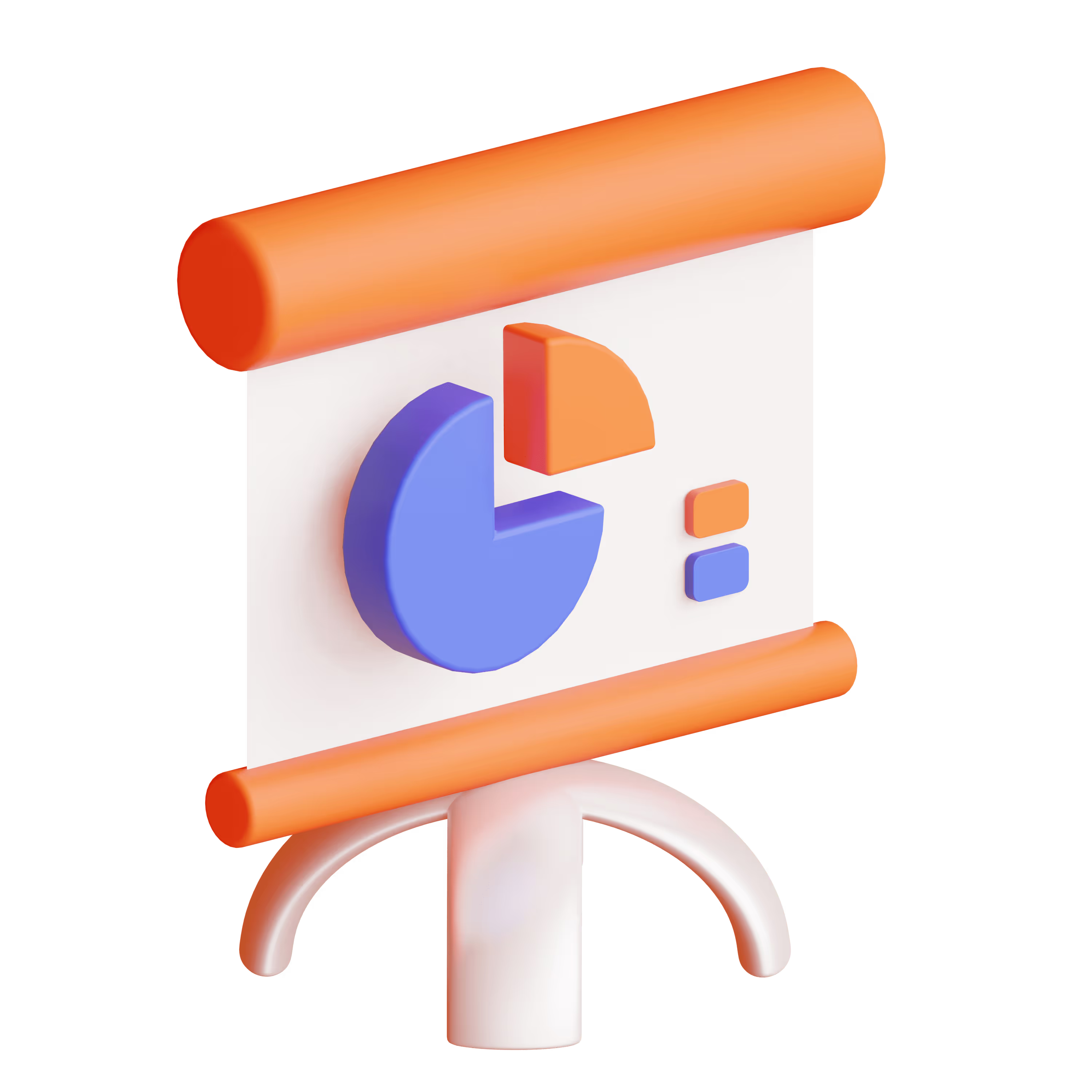We understand that things happen and situations change, but we hope you had a good experience with us!
Unfortunately, once a member leaves you can no longer reapply to join again down the road.
Are you sure you want to leave us?
.svg)
SEO Basics for Web Designers
Learn how to drive traffic to the websites you build and monetize your new skill.

Get SEO and Webflow course for just $100 by using code PRO-FOUNDER (normally $697)
What you will learn in this training…
- What is SEO
- SEO tech stack
- Executing SEO
- Outsourcing and delegating SEO
- Offering SEO as a service
- Site migrations
SEO can be…
- Super simple
- Automated and outsourced, if done with care and caution
- Super profitable
What qualifies me to teach you SEO?
- My team has been able to generate millions of organic site visitors every year for our clients
- SEO course “SEO and Webflow” over 700+ paid students
- Private SEO community of 7,000+
- Team of 7+ SEO’s
- Served clients all over the world
What is SEO and why do you need it?
- “SEO is the act of optimizing your website and increasing online mentions of your business in order to be classified by Google as an authoritative business.”
- Google is extremely motivated to deliver the best results. There’s no
Google cares about:
Is this website quality?
- Security and page speed
- Mobile Friendly
- On-Page Optimization
- Domain Age and Authority
Does this website answer the query?
- Does it answer the search query with keywords and content
Is this website popular?
- Local citations
- High quality backlinks
There are two places you can show up in Google:
- Local Map Pack: location based
- Organic Results: everything you do to rank on Organic Results will also benefit your Local Map Pack rankings
Benefits of SEO
Cheapest form of traffic
- Google ads: $2.32 CPC
- Facebook ads $1.86 CPC
- Largest SEO client: $0.13 CPC
Highest quality traffic
- Searchers are always weary of paid ads.
- Those that find you organically automatically trust you more.
Converts better
- Can target top and bottom funnel
So why doesn’t everyone do SEO?
- SEO is slow and not an exact science, which makes many people impatient or skeptical
SEO Tech Stack
- Google Analytics - free
- Google Search Console - free
- Ahrefs - starting at $99/month
- SEMRush - starting at $199/month
Secondary Tools - cheaper tools to support your SEO efforts
- Mangools - starting at $29/month
- Moz Local - free (limited)
- Keywords Everywhere - free
- Semflow - we are currently in the beta testing phase of our own Webflow tool called Semflow, hoping to launch in the next few weeks!
Executing SEO - 4 Buckets of SEO
Research
Site health audits
Check the site speed
- Use Google PageSpeed Insights and then:
- Compress images with TinyPNG
- Minify HTML, CSS and JS
Check if site is mobile friendly
- Use Google Mobile-Friendly Test
Check the site for common errors
Use tools like SEMRush, Ahrefs or Semflow to check for:
- Duplicate titles and metas
- H1-H6
- Word count
- Images with missing alt attributes
- Broken links
- Etc.
Keyword research
- Keywords are the words or phrases that people type into Google to find an answer to their query.
- Keyword Research will show you what people are searching and which keywords to use on each of your website pages.
How to do Keyword Research
- Brainstorm (use common sense, look on Google or check competitors)
- Use a KW tool (SEMrush, Ahrefs, Keywords Everywhere) to find exact keywords and keyword variations
- Check search volume and keyword difficulty for each keyword. Typically avoid or develop strategy for difficult keywords, knowing they are worth pursuing but will take a while to rank for them.
- Select which keyword you will use on each page of your website (one per page)
- Connect keywords to site pages
Where do I use the keywords?
- Page title
- Page link
- H1
- In content
- Image alt text
Organization
Make sure you:
- Have a clear link structure
- Use text links that describe the destination for the links
- Have clear navigation in header and footer with descriptive words
- Use H1-H6 to tell Google what it's reading
On-page
Title tags
- Include your keyword close to the beginning
- Keep to about 50-60 characters
- Write for humans
- Think about your Click-Through Rate (CTR)
- Use a SERP simulator
Meta descriptions
- Include your keywords (gets bolded)
- About 50-160 characters
- Write for humans
- Think about your Click-Through Rate (CTR)
- Note: Does not directly affect SEO. *Also note that Google may not use your meta description.
URLs
- Include your keyword
- Keep it short if possible. About 3-5 words.
- Use hyphens to separate words
- Use lowercase
Headings
- Used to organize content
- H1 - H6
- The most important is going to be your H1
- Only use one H1 heading per page
- Make each H1 heading unique to its own page. No duplicates.
- Use your keyword in H1 (towards beginning if possible)
- Write for humans
Image optimization
- Run your images through a program like TinyPNG to compress the file size (helps with website speed)
- Add a descriptive file name before uploading the image to Webflow
- File name: All lowercase, use hyphens to separate words
- Add a descriptive Alt Name within site builder after uploading
- Alt name: Write using normal English grammar
- File Name: taylorview-dental-office-idaho-falls.jpg
- Alt Name: Taylorview dental office in Idaho Falls
Content
Content
- Include your keyword naturally in the first 100 words of your copy, make sure the content flows
- The quality of each page should be written around your H1 (main keyword)
- Make sure your content is helpful to prove that it gives the answer to the query that was searched
- Make sure each page has at least 300 words, more is better.
Blogging
- Blogging will provide the opportunity to go after an “infinite” amount of keywords
- Allows you to target top of funnel keywords
- Keeps the website fresh (Google loves consistent updates)
- Build credibility and trust by providing value
- Often easier to acquire backlinks to blog articles
Off-page
Backlinks
- Backlinks are the most difficult ranking factor to achieve but also THE MOST IMPORTANT.
- A backlink is when someone mentions your business or a page of your website and links to that page from their own website.
- Not all backlinks are created equal
- You don't need backlinks right off the bat to get results
- Citations count as low level backlinks - citations are business directory sites that you can pay to get a listing on
- There will almost always be "low hanging fruit" links
- You can outsource (with GREAT CAUTION)
- How to evaluate a backlink prospect
Technical metrics to think about when evaluating a website:
- Domain rating
- Domain Authority
- Citation Flow
- Trust Flow
- Traffic
Also, give it the “gut” check:
- Does the website look spammy?
- Would I read something on the website?
- Does it feel trustworthy?
- Is the website relevant?
Acquiring backlinks
- Online directories - local citations, etc.
- Blogs
- News sites
- Find a link building prospect
Can search Google for “[your topic] + “write for us””. This will instantly give you potential websites that allow you to write and publish articles on their website.
Outreach example letter:
Hi [webmaster name]
My name is ______. I’m a fan of your website and loved the article
about [reference article on their site]
I’d love the opportunity to contribute to your blog. I have a draft
about [blog topic] that I think would be perfect for your audience.
Here is some samples of my past work:
- Link 1
- Link 2
Talk soon,
[Your name]
- Exchange of content/payment
- Write or outsource your blog article
- Try to write a minimum of 500 words
- Keep the piece informative and valuable (don’t be promotional or salesy)
- Naturally include a link to your website
- Write and deliver article
- If possible, include the link to your website near the top of your blog and use good anchor text
- Link to other reputable websites within the article
- Deliver the article following the webmaster’s guidelines
Outsourcing & automating SEO
Automate (Tool)
- Analytics
- Audits
- Keyword research
- Reporting
Outsource (Hire)
- On-page optimization
- Content
- Backlinks
- Things you can’t/shouldn’t outsource include sales, client-facing activities, strategy/understanding, access to client’s assets
Important tips when outsourcing
- Research the company - look at testimonials, case studies, and pricing. Are they reputable?
- If the company isn’t transparent about their processes… Run away!
- Avoid companies that use any sketchy techniques to acquire backlinks.
- Beware of companies that over-promise ($1 backlinks?)
- It should be easy to communicate with the company
General SEO Outsourcing Companies
- The Hoth
- Loganix
- SEOHive
Content Outsourcing Companies
- SEO Content Hero
- Wordagents
Links and Citations Outsourcing Companies
- Brightlocal
- Fatjoe
Predicting SEO Results
Managing expectations
- SEO is the long-term play
- SEO is about consistency, not speed
- Typically takes 9-12 months to start seeing any real results
- If offering SEO as a paid service:
- Set clear expectations with your clients
- Under-promise and over-deliver
- Follow an exact process to start to predict results
- Sign for long-term agreements (12+ months)
Ways to predict SEO
- Visit Ahrefs Keyword Difficulty Checker (Free)
- Type in your target keyword
- Note how many backlinks it will take to rank in the top 10
- Divide this by your monthly output of backlinks
- Example
- Ahrefs estimates you will need backlinks from 183 websites to rank in the top 10 for “SEO company” (pretty tough keyword to rank for)
- 183 / 3 = 62 months to get in the top 10 for “SEO Company”
- *Note: This method only takes backlinks into account. The rest of your SEO efforts need to be on par as well.
SEO results come faster based on…
- How competitive the industry is
- How much search volume there is
- Age of domain and website
- Past success
- Budget (how aggressive you can be)
Site Migrations
Reasons new sites lose traffic
- Loss of indexed pages
- Drastic change in: Site structure, Page titles, Headers, Content, Layout, Broken links
Understanding site migrations will:
- Improve your client’s experience
- Allow you to charge more ($3,0000-10,000 for just SEO)
- Make you stand out from the competition
- Set you up to offer SEO as a service after migration
Step One: Benchmark current website
- Run audits using any general SEO tools and document current scores and rankings. This will help you measure the success of your migration.
Step Two: Map current URLs
- Use a URL’s Extraction Tool (available as a tab in Migration Checklist in your dashboard) to create a spreadsheet of all site pages and their URLs.
Step Three: Transfer content
- If the client wishes, you can also manage the actual transfer of page content. In many cases, this can be automated by downloading and uploading a .csv file.
Step Four: On-page SEO
Make sure you copy over and match as much as possible:
- Title tags
- Meta descriptions
- Open graph images
- Page URLs
- Headings
- Internal links
- Images alt texts
- File names
Step Five: Set up 301 redirects
If there are any changes in indexed pages (link changed or page deleted), make sure you redirect those old links to a new destination.
Step Six: Final checks
Launch your site and run another set of checks and audits to make sure there aren’t any critical errors. Make sure to look for broken links, missing assets, spelling and layout errors, and other errors caught by your general SEO tools.
SEO Resources available in your dashboard
- SEO Basics Checklist
- SEO Contract Template
- SEO Pricing Page
- Migration Checklist
Audience Questions
What are some benefits of using Webflow for SEO?
- Clean code in Webflow is a big benefit. But you can rank a website built on any site builder.
What about AI tools for writing content?
- Just be careful with this. Google is making changes to try and “catch” this. Potentially you can use AI, but then maybe have a human go through and edit and make changes to make it sound more human.


